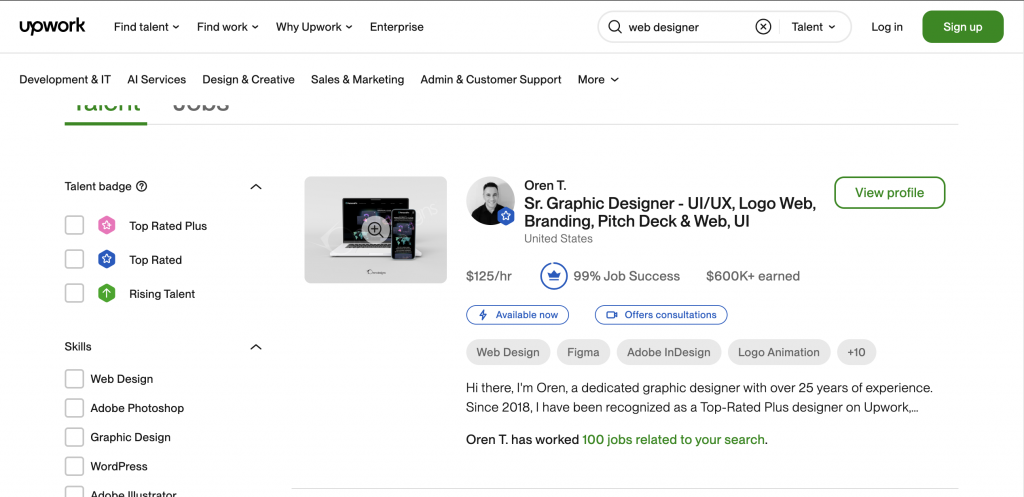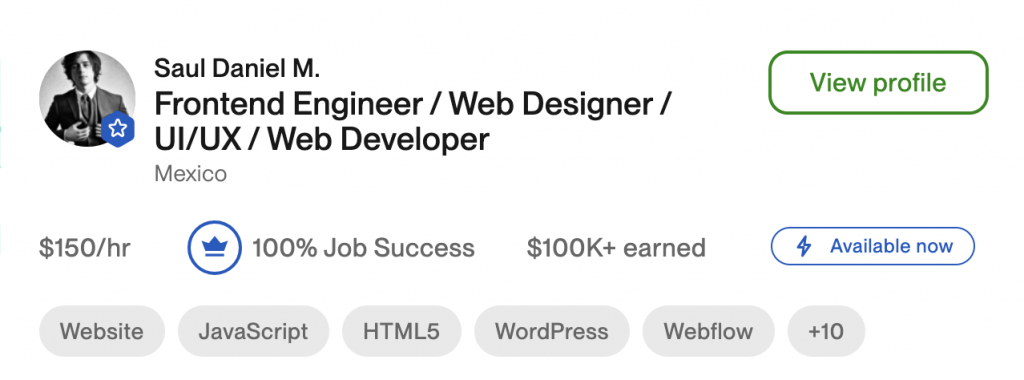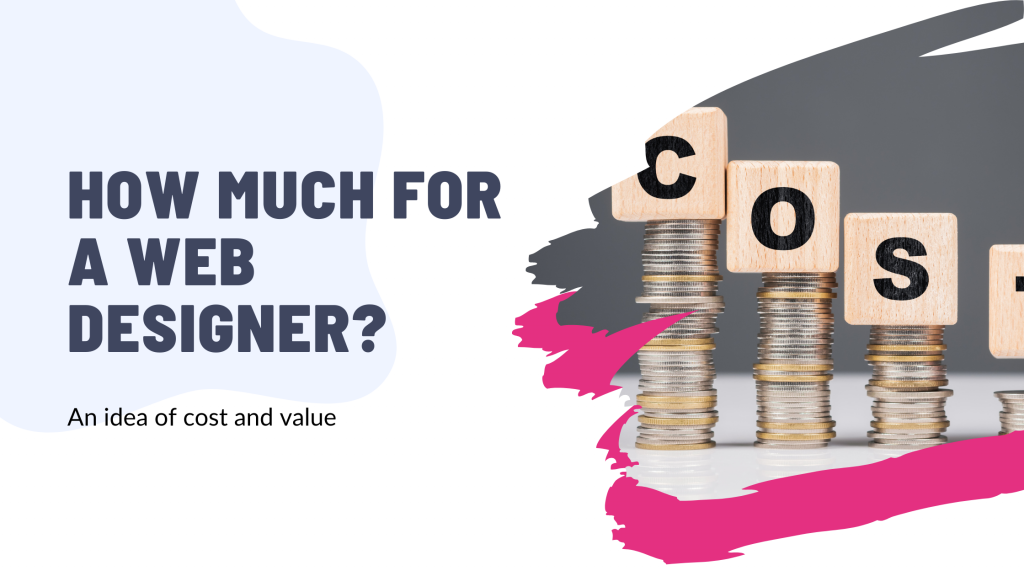Are you ready to take your online presence to the next level? Understanding how much a web designer costs—and what that investment truly offers—can be a game changer for your business!
In today’s digital world, a stunning website isn’t just a luxury; it’s a necessity. But with so many options out there, it’s easy to feel overwhelmed.
Don’t worry! We’re here to break it down for you. From the factors that influence pricing to the incredible value a professional designer brings, this guide will equip you with everything you need to make informed decisions.
Let’s dive in and discover how investing in web design can elevate your brand and attract the customers you deserve!

If you need help creating your website, don’t hesitate to contact us. Click here.
Average Costs for Web Design Services
When you’re looking to create or revamp your website, one of the first questions that pops up is, “How much for a web designer?”

Understanding the costs involved can be a bit tricky, but don’t worry—we’re here to break it down for you! In this section, we’ll compare the costs of hiring freelancers versus agencies and explore typical pricing models that web designers use.
This way, you’ll have a clearer picture of what to expect and how to make the best decision for your needs.
Freelancers vs. Agencies
Hiring a web designer can take two main paths: freelancers and agencies. Freelancers often charge less, with rates typically ranging from $25 to $150 per hour, depending on their experience and skill set.
They offer a personal touch and can provide flexibility in communication. However, keep in mind that they might not have the resources to handle larger projects or offer ongoing support.
On the other hand, agencies usually come with a higher price tag, often ranging from $75 to $250 per hour or more. While this may seem steep, agencies bring a team of professionals to the table, including designers, developers, and marketers.
This can result in a more comprehensive service and a polished final product. Yet, this option might lack the personal connection you’d find with a freelancer.
Typical Pricing Models
When it comes to pricing models, there are a few common structures you should be aware of. Many web designers charge hourly rates, which means you pay for the actual time they spend working on your project. This model is straightforward, but it can lead to unexpected costs if the project takes longer than anticipated.

Alternatively, some designers offer fixed prices for specific projects. This can give you peace of mind, knowing exactly what you’ll pay upfront. Just be sure to clarify what’s included in that price!
Additionally, remember that there may be extra costs for maintenance and updates once your website is live. It’s essential to factor these into your budget as well.
“The value of a great website goes beyond just its initial cost; it’s an investment in your business’s online presence.”
Factors Influencing Web Design Costs
When considering how much a web designer will cost you, it’s essential to understand the various factors that can influence these prices.
Knowing what drives the costs can help you make informed decisions and find the right fit for your project. Let’s dive into some of the key elements that play a role in web design pricing.
Experience and Expertise
One of the most significant factors affecting pricing is the designer’s experience and expertise. Generally, junior designers—those who are just starting out—will charge less, often ranging from $25 to $75 per hour. While they may be enthusiastic and eager to impress, their limited experience might mean more guidance is needed.
In contrast, senior designers with years of experience can charge anywhere from $100 to $300 per hour. Their expertise often means they can tackle complex projects more efficiently and with a higher level of quality. When choosing a designer, take the time to review their portfolio.
A strong portfolio showcases their skills and helps you assess the value they can bring to your project.
Project Scope and Complexity
The scope and complexity of your project significantly impact pricing as well. A simple website with just a few pages and basic features will generally cost less than a complex site with multiple functionalities.
For example, an e-commerce site with shopping cart capabilities, payment processing, and custom graphics will require more time and resources, driving up costs.
Common features that can increase your budget include:
- E-commerce functionality: Adding online shopping capabilities requires additional setup and security measures.
- Custom graphics: Unique designs and illustrations take more time to create compared to using stock images.
- Responsive design: Ensuring your site looks great on all devices can also add to the workload.
Geographic Location
Another factor to consider is the geographic location of the designer. Designers in cities with a higher cost of living may charge more compared to those in regions where expenses are lower. For instance, a designer based in New York may have higher hourly rates compared to one in a smaller town.
However, working with international designers can also offer benefits. You might find talented professionals at a lower cost while benefiting from diverse perspectives and styles. Just be mindful of potential language barriers or time zone differences when coordinating your project.
The Value of Investing in Quality Web Design
When considering how much to spend on web design, it’s vital to recognize the value that quality design brings to your business. Investing in a well-designed website does more than just look good; it can significantly impact your success online.
Let’s explore two key areas where quality web design pays off: user experience and branding.
User Experience and Engagement
A well-crafted website can dramatically enhance user experience. When users land on your site, they should find it easy to navigate, visually appealing, and informative. Good design helps guide visitors through your content, making it simple for them to find what they’re looking for.
Did you know that 38% of users will stop engaging with a website if the content or layout is unattractive? This statistic highlights the critical role that design plays in user engagement. A responsive design that adapts to different devices can also keep users interested, as mobile-friendly websites are essential—over 50% of web traffic now comes from mobile devices.
Investing in quality web design means investing in a better user experience, which can lead to longer visit durations and increased conversions.
Branding and Credibility
Another important aspect of quality web design is its impact on your branding and credibility. A professional-looking website enhances your brand image and sets you apart from competitors. When visitors see a polished and modern design, they are more likely to perceive your business as trustworthy and reputable.

First impressions matter, especially online. Research shows that it takes just 0.05 seconds for users to form an opinion about your website. This means that if your site looks outdated or poorly designed, potential customers might leave before they even explore your offerings.
In today’s digital landscape, where competition is fierce, having a strong brand presence is crucial. A well-designed website can effectively convey your brand’s values, mission, and personality, helping you establish a connection with your audience.
Tips for Choosing the Right Web Designer
Selecting the right web designer is crucial for the success of your project. With so many options out there, it’s essential to approach the process thoughtfully. Here are some practical tips to help you find a designer who aligns with your goals and vision.
Define Your Goals and Budget
Before reaching out to potential designers, it’s vital to define your goals. Ask yourself what you want to achieve with your website. Are you looking to increase sales, improve user engagement, or build brand awareness? Having clear objectives will guide your conversations with designers and ensure that they understand your needs.

In addition to goals, setting a realistic budget is crucial. Research average costs in your area and consider the features you need. It’s helpful to create a budget range rather than a fixed number, allowing for flexibility based on the designer’s expertise. Remember that investing in quality design can pay off in the long run!
Research and Compare Portfolios
Once you have a clear sense of your goals and budget, it’s time to research and compare portfolios. A designer’s past work is one of the best indicators of their style and capabilities. Look for projects that align with your vision and brand aesthetic.
When evaluating portfolios, consider the following:
- Variety: Does the designer showcase a range of styles and projects?
- Functionality: Are the websites easy to navigate and visually appealing?
- Relevance: Have they worked on similar projects or industries?
Don’t forget to check references and reviews from previous clients. This can provide insight into their work ethic, reliability, and how they handle feedback. Websites like Clutch or Google Reviews can be great resources for this.
Communicate Your Vision Clearly
Effective communication is key to a successful partnership with your web designer. Make sure to communicate your vision clearly from the start. This will help ensure that the designer understands your expectations and can bring your ideas to life.
To facilitate this, consider creating a brief that encapsulates your vision. Include details such as:
- Design preferences: Colors, styles, and examples of websites you love.
- Functional requirements: Any specific features or functionalities you need.
- Target audience: Who are you trying to reach with your website?
By providing this information upfront, you’ll set the stage for a productive collaboration, making it easier for your designer to deliver a website that meets your needs.

If you need help creating your website, don’t hesitate to contact us. Click here.
Conclusion
Navigating the world of web design costs can be challenging, but understanding the key factors—such as the designer’s experience, project scope, and the value of quality design—can empower you to make informed decisions.
Remember, investing in a skilled web designer not only enhances user experience but also strengthens your brand’s credibility.
If you have specific goals in mind and need assistance with implementation, I’m here to help! Feel free to reach out via our contact form, or connect with us on Instagram or Facebook. Let’s create something amazing together!

